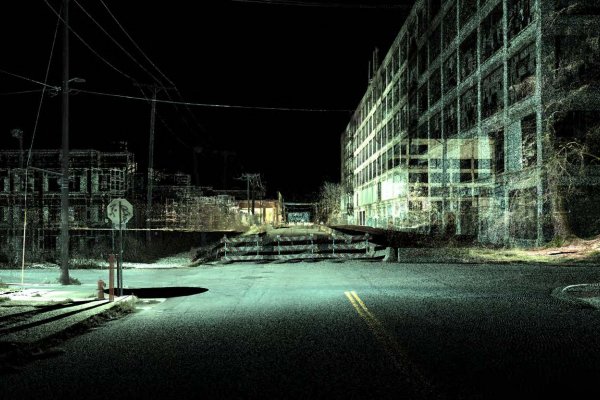Where the City Cant See

Liam Young, who works as an architect, sees himself as a "worldbuilder" who creates visionary films and speculative worlds at the intersection of "design, fiction and the future".
The Liam Young-directed 2019 video Where the City Can't See. Hacking the Eyes of the Smart City creates a dystopian image of a city that has become a digital organism controlled by an extensive network as a "smart city". In this hostile environment, the video tells the story of a group of people who go in search of a "wilderness beyond the machine". Part of a subculture who work on the production lines of machines during the day, those people camouflage themselves from the network's facial recognitions at night and take a taxi through the city, hoping to hack the eyes of the "smart city" to get to a place where the city can no longer see them.
Scripted by Tim Maughan and developed in collaboration with Alexey Marfin, this is the world's first video to use laser scanners throughout. Computer vision systems and scanning technologies used in driverless cars, city management systems or Google Maps, for example, were employed, creating an overall "image of a city seen through the eyes of robots" in the video.
The narrative of the film plays with a fear of human takeover by intelligent machine systems that is primarily present in the European and Anglo-American regions. Already decisively shaped in the age of the first industrial revolution, this fear continues to this day. The philosopher Richard David Precht, for example, refers to the "fourth industrial revolution" and would like to use it to describe an epoch in which humans have been completely replaced by machines in their work activities. The philosopher Byung Chul-Han also refers to similar problems in his publication "In the Charm of the Digital." At the moment, the fear of being overtaken by artificial intelligence is very topical in the example of ChatGPT. This fear of the machine or the robot or the AI, for example, reaches its peak in pop-cultural phenomena such as the Matrix or Terminator series of films, in which humans are ultimately nothing more than a battery or chess piece in the game of artificial intelligences. Art has attempted to depict human-machine relationships since the modern era at the latest (as in "Metropolis"). It has developed dystopian scenes, but also possible (utopian) areas of application of new technology as a benefit for man and nature.
